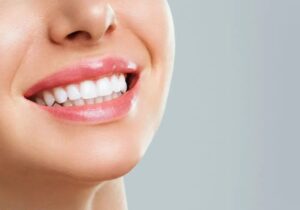
Unveiling Periodontal Disease: Insights into Its Causes and Effects
The periodontium is an important part of your oral cavity that comprises the cementum, gums, PDL (periodontal ligament), and alveolar bone. It helps anchor your tooth firmly and enables it to withstand the masticatory forces. Any damage to the periodontium can lead to progressive destruction, eventually causing tooth loss. This is known as periodontal (gum) disease.
Prompt treatment offered by the dentist in Fontana, CA to curb gum disease can help restore the integrity of the periodontium, thereby enhancing your oral health. Read on to learn everything about periodontal disease.
Understanding periodontal disease
Periodontal disease is mainly the result of infection and inflammation of the gums and bones (periodontium) that surround and support the teeth. In its early stage, called gingivitis, the gums can become swollen and red, and they may bleed. In its more serious form, known as periodontitis, the gums can pull away from the tooth, bone can be lost, and teeth may loosen or even fall out. Periodontal disease and tooth decay are the two biggest threats to dental health.
Potential etiology for periodontal disease
Bacteria residing in the oral cavity pose a risk of infection as they can accumulate and create a thin, adhesive layer known as plaque on tooth surfaces. Over time, plaque hardens into tartar (calculus), which may extend beneath the gum line and infiltrate the bone. This calculus production triggers the release of damaging toxins and acids, which contribute to the demineralization of tooth structure and the erosion of supportive tissues.
The risk factors associated with periodontal disease
Certain factors can increase your susceptibility to develop periodontal disease. These include:
- Family history
- Poor oral hygiene
- Puberty, pregnancy, and menopause due to hormonal changes
- Smoking
- Stress
- Certain medical conditions like diabetes, and heart disease
- Medications such as immunosuppressants and those that reduce saliva production
- Certain autoimmune diseases like lupus
The warning signs of periodontal disease
Periodontal disease can manifest in the following signs and symptoms:
- Red, swollen gums
- Tender, painful gums
- Bad breath (halitosis)
- Bleeding gums
- Pain when chewing
- Poor bite due to malocclusion
- Receding gums
- Increased tooth sensitivity
- Loose teeth
The treatment options for
periodontal disease
Your dentist will recommend any one of the following treatment options depending on the severity, and stage of the disease.
- Gingivitis: Usually treated with good oral hygiene and regular dental cleaning (supragingival).
- Periodontitis: Treated with extensive methods and procedures. These include the following:
- Subgingival scaling and root planning
- Medications
- Antibiotic gels and mouth rinse
- Enzyme suppressants
- Pocket irrigation
- Corrective surgery
- Pocket elimination surgery
- Tissue regeneration
- Gum grafting
- Bone grafting
- Dental implants
Timely dental care is essential in identifying and addressing periodontal disease promptly, potentially reversing its effects. Recognizing the signs and seeking professional intervention early can significantly enhance your oral health and overall well-being.



